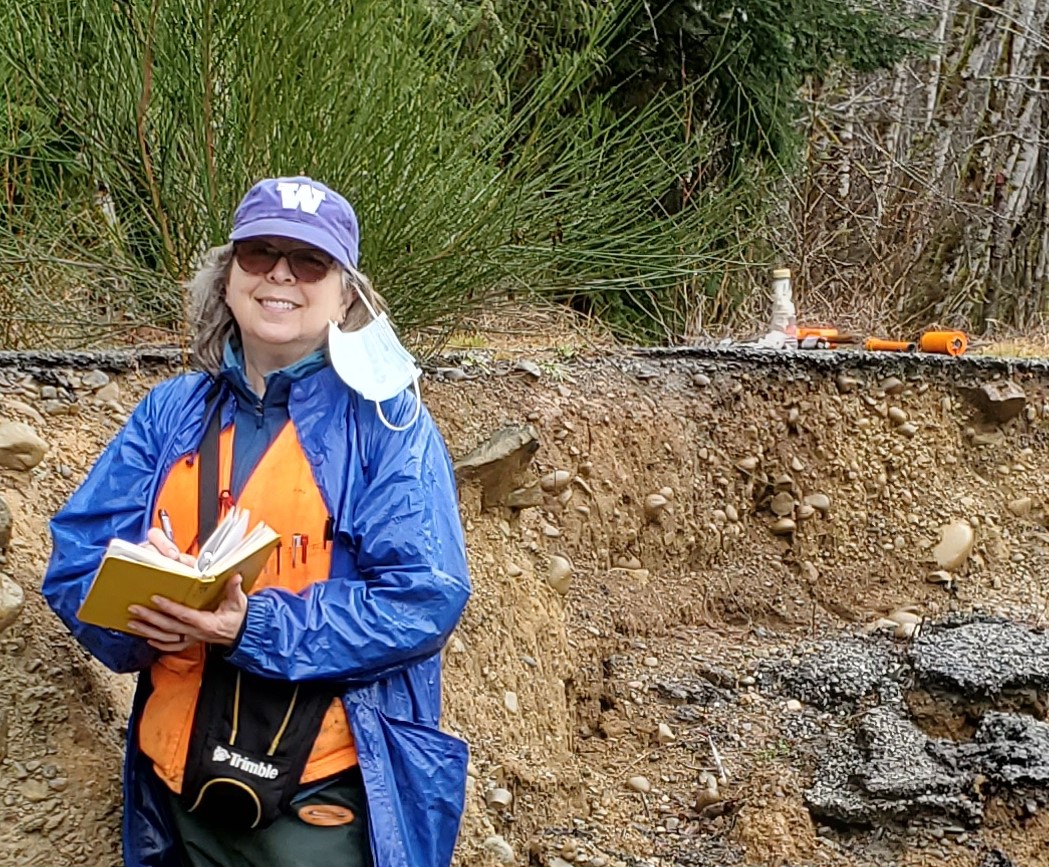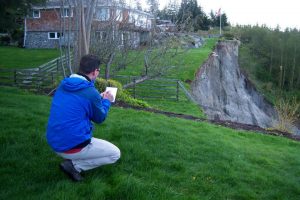Previously Funded Projects
QRC members lead and participate in a wide range of disciplinary and interdisciplinary research projects from the study of past earth climates and glaciations to shifts in the geographic distributions and evolution of vegetation and faunal communities, to the evolution and dispersals of the genus Homo and the increasing scales of human modification of earth environments through the Holocene. QRC provides a venue for meeting and collaborating with scholars across Quaternary disciplines. We are also fortunate to be able to provide seed funding and small grants for member research projects. We are especially happy to support grad student and junior scholar research activities, much of which leads to larger, external funding from agencies like the National Science Foundation.
-
Establish Monitoring of the Undi Road and Reade Hill Terrace Landslides near Forks, Washington
-
Dating Puget Landslides and Sediment Deposits
-
Land use, erosion, and sediment storage over the last two millennia in a mountainous catchment in southwest Sichuan Province
-
Frequency of Long Runout Landslides near Oso, WA and the Implications for Landscape Evolution and Natural Hazards
 Abstract: The Undi Rd and Reade Hill terrace landslides, southeast of Forks, WA, are spectacular examples of active landslides typical of alpine glacial valleys on the west side of the Olympic Peninsula. The Undi Rd landslide sits within the much larger Reade Hill terrace landslide and is growing and moving relatively rapidly. Each year, scarplet heights and the aperture of tension cracks nearly doubles. And yet, little is known about either of these slides even though they have caused repeated road repair and the construction of an emergency bypass road, to maintain access for residents, recreation, fisheries, and some popular trailheads in the Olympic National Park. Our proposal is to begin a monitoring program by installing approximately 24 monitoring points around the perimeter and in the body of the landslides. We will obtain high-precision GPS coordinates and fully document the locations of each monitoring point.
Abstract: The Undi Rd and Reade Hill terrace landslides, southeast of Forks, WA, are spectacular examples of active landslides typical of alpine glacial valleys on the west side of the Olympic Peninsula. The Undi Rd landslide sits within the much larger Reade Hill terrace landslide and is growing and moving relatively rapidly. Each year, scarplet heights and the aperture of tension cracks nearly doubles. And yet, little is known about either of these slides even though they have caused repeated road repair and the construction of an emergency bypass road, to maintain access for residents, recreation, fisheries, and some popular trailheads in the Olympic National Park. Our proposal is to begin a monitoring program by installing approximately 24 monitoring points around the perimeter and in the body of the landslides. We will obtain high-precision GPS coordinates and fully document the locations of each monitoring point.